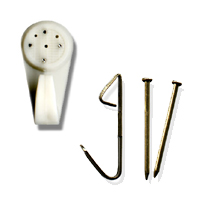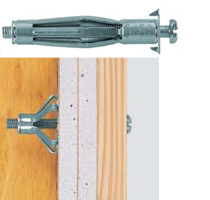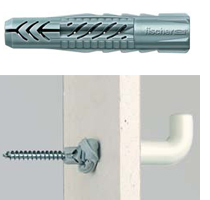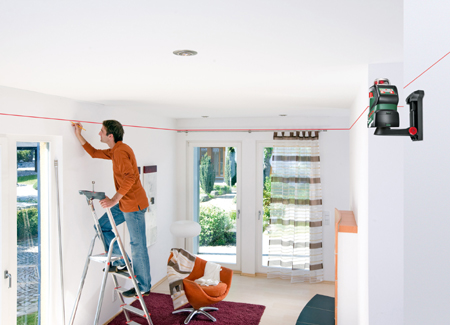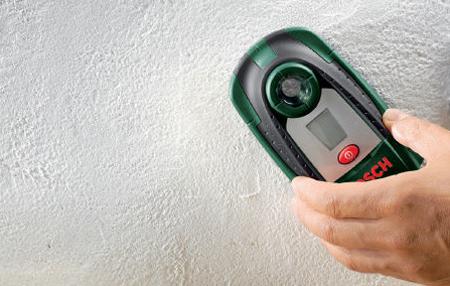How to... Hang onto walls
Whether you are hanging a shelf, a mirror, frame picture or headboard, they all need to be attached safely and firmly to the wall to which they are fastened. The type of fastener that you need to use will vary according to the weight of the object and the type of wall construction.
Here's a quick guide to the various types of fasteners to use based on the object weight and the wall type.
Picture Hook
Hammered onto the wall, the nailed picture hook is the most commonly used wall hanger due to it's ease of use. Note: These hooks should only be used for lightweight objects.
How to attach
Simply place the hook flat against the wall and strike the nail with a hammer and the hook is installed.
DIY Tip
Bear in mind that this hanger needs to be mounted higher than where you want to actually hook to be.
Spring Toggle Anchor
Hanging objects onto drywall requires a completely different type of fitting. The spring toggle anchor expands by spring force into cavity walls.
How to attach
Drill a hole. Fold the wings together and insert into the drilled hole. When inserted the wings will pop open. Screw until the fixing is flush with the inside of the wall.
Expandable Cavity Fixing
The most simple and effective way to hang objects onto drywall. An expandable cavity fixing is similar to a toggle but have metal straps that are designed to buckle in a specific manner as the bolt tightens and compresses the umbrella closure.
How to attach
Drill a pilot hole to the specified diameter, insert the fixing and tap lightly with a hammer. Screw the fixing tightly.
Nylon Wall Anchor
Designed for anchoring into concrete, brick, stone, hollow blocks and gypsum boards , fischer nylon UX wall plugs have a unique design that enables their use in almost all building materials. No special screws are required and fischer UX plugs can be used with wood and chipboard screws from 4 mm to
12 mm.
How to attach
Drill a pilot hole to the specified diameter as indicated on the pack of box. Insert the fixing. The collar of the UX is designed to prevent it from slipping into the drilled hole. Tighten the screw.
SAFETY FIRST:


